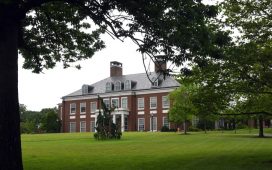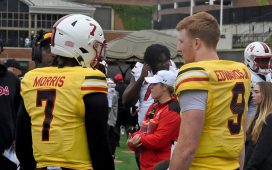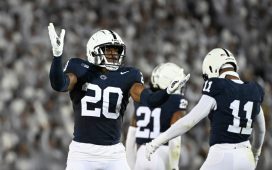Races in California and in Florida on Jan. 15 highlighted the high stakes that farms and breeders contend for in breeding each crop of racers. The highest stakes are played for the top stallion prospects each year, and the keystone of each new breeding season is the acquisition of these premium stallion prospects, who are the objects of intense competition from the leading farms in Kentucky.
The best-organized and -financed farms bid as much as the market will bear to bring in those highly attractive sire prospects and the consequent large books of mares and attendant prestige from working with leading breeders and marketers.
The result is that the top prospects for each crop are priced as high as the marketplace can accommodate, and the expectations for these highflyers are as high as their stud fees.
This isn’t an evaluation of whether this is the most effective way to select stallions; it’s just a description of the way the marketplace, especially in America and Europe, works in response to the stallion acquisition model currently in use.
Once the farms and their annual stallion prospects are into this process, there isn’t much they can do except to provide the best opportunity, management, and promotion available to maximize their new sire prospects. And hang on for the ride.
Because there is a considerable amount of unpredictability in the stallion market on the performance side of the equation. First, there is the unpredictability of genetic transmission, and second, there is the unpredictability of training and racing Thoroughbreds.
The genetic transmission of athleticism and excellence is difficult to evaluate, but study of the results of stallion prospects’ offspring on the racetrack shows us that fewer than half of the annual stallion prospects transmit their own genotype and phenotype effectively enough to become successful stallions; perhaps 15 to 20 percent do this well enough to be consistently good stallions.
Breeders, owners, buyers, sales companies, and advisers to all attempt to do this ahead of the curve, and inevitably, they are more wrong than right because most stallion prospects are going to fail.
The looming sense of failure is inevitable because most entities in racing score success by stakes victories and black type earned. With only about 3 percent of horses winning stakes annually, that means 97 percent do not. That’s a statistical hump that is hard to get around, and the sire who does so with some finesse, in the manner of Mr. Prospector, Storm Cat, or Into Mischief, is a paragon of many virtues.
Faults be damned.
Any competent horseman could have looked at the progeny of the sires above and said he didn’t like this, that, or the other. But those same sires didn’t just tickle the brass ring, didn’t just catch the ring. No, they hit that sucker so hard, they turned it into a dinner plate.
That’s what a breed-changing sire can do and does. But this column is about the great majority of stallions and stallion prospects: those who don’t get the ball out of the park, or at least not immediately.
The result of the intense competition among stallions, owners, farms, and trainers is that most stallions are surplus to needs after only a few years at stud. As a result, they are frequently sold on to racing jurisdictions that have room for a stallion with potential to work in their racing and breeding community.
[Story Continues Below]
Among the most consistent buyers of American stallions over the past years are breeding organizations like the Korean Racing Authority, the Japan Bloodstock Breeders Association, and the Jockey Club of Turkey.
In the last weekend’s racing, the results were littered with the names and the domestic descendants of stallions who have gone to stud in Kentucky, then been sold to stand elsewhere.
For instance, the Pasco Stakes at Tampa Bay went to Markhamian (by Social Inclusion), and his broodmare sire, Colonel John (Tiznow), is in South Korea. Leggs Galore won the Sunshine Millions Filly & Mare Turf Sprint, and her sire Bayern (Offlee Wild) is now at stud in South Korea after purchase last summer by Sangil Choi. Gatsby won the Sunshine Sprint at Gulfstream Park; his sire Brethren (Distorted Humor) is still evading ‘gators in Florida, but his broodmare sire, Aldebaran (Mr. Prospector), was sold to stand in Japan, beginning with the 2009 breeding season. And at Santa Anita, Aligato (Kitten’s Joy) won the Unusual Heat Turf Classic. The sire still enjoys considerable popularity in Kentucky, but the broodmare sire, Rock Hard Ten (Kris S.), was sold to the KRA in November 2012, and stood at their Jeju stallion station until his death on Nov. 17 last year.
Short of a change in the economics of stallion acquisition and management, this is the pattern of the present and the future.
New to the Paulick Report? Click here to sign up for our daily email newsletter to keep up on this and other stories happening in the Thoroughbred industry.
Copyright © 2022 Paulick Report.






